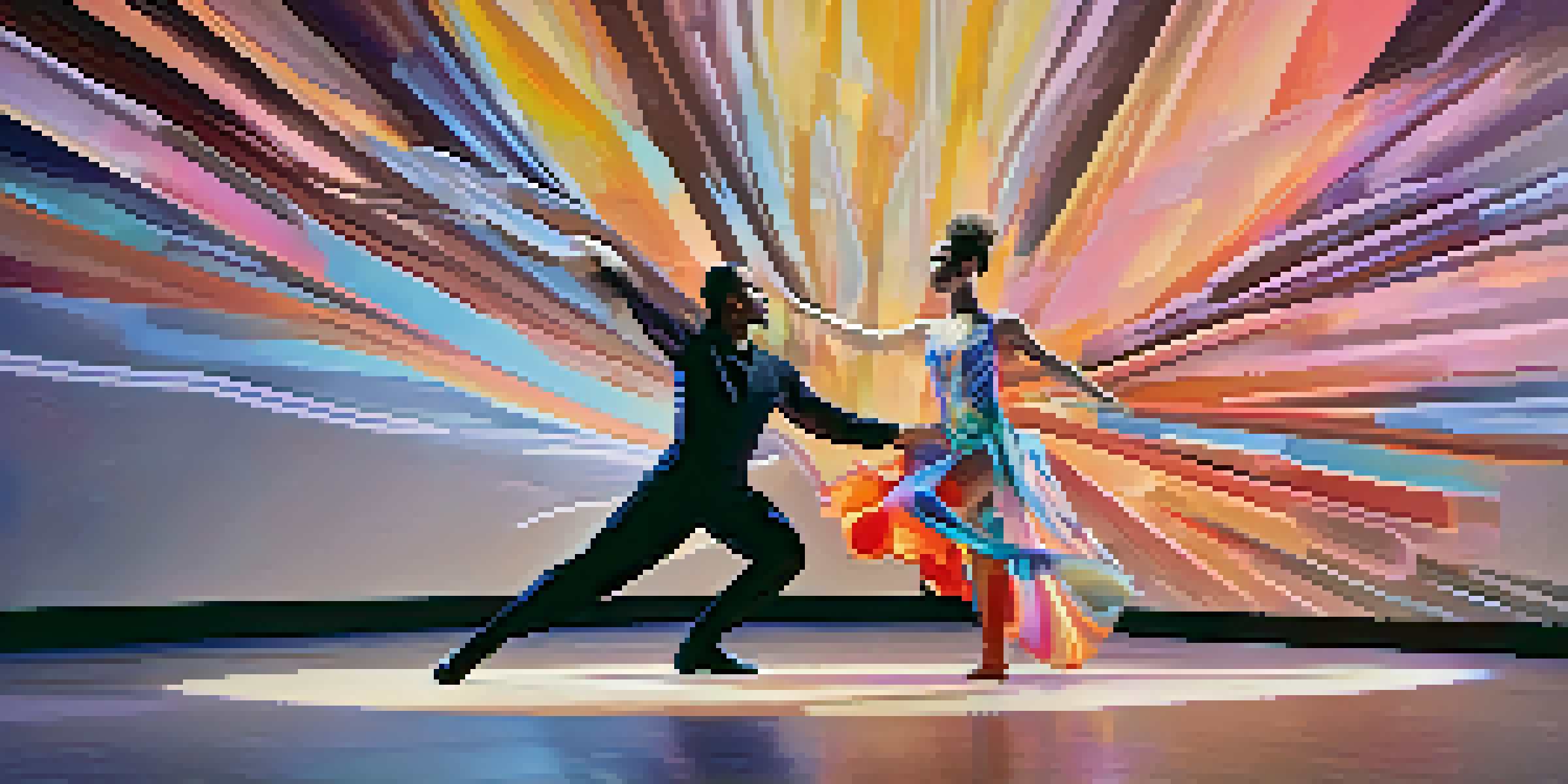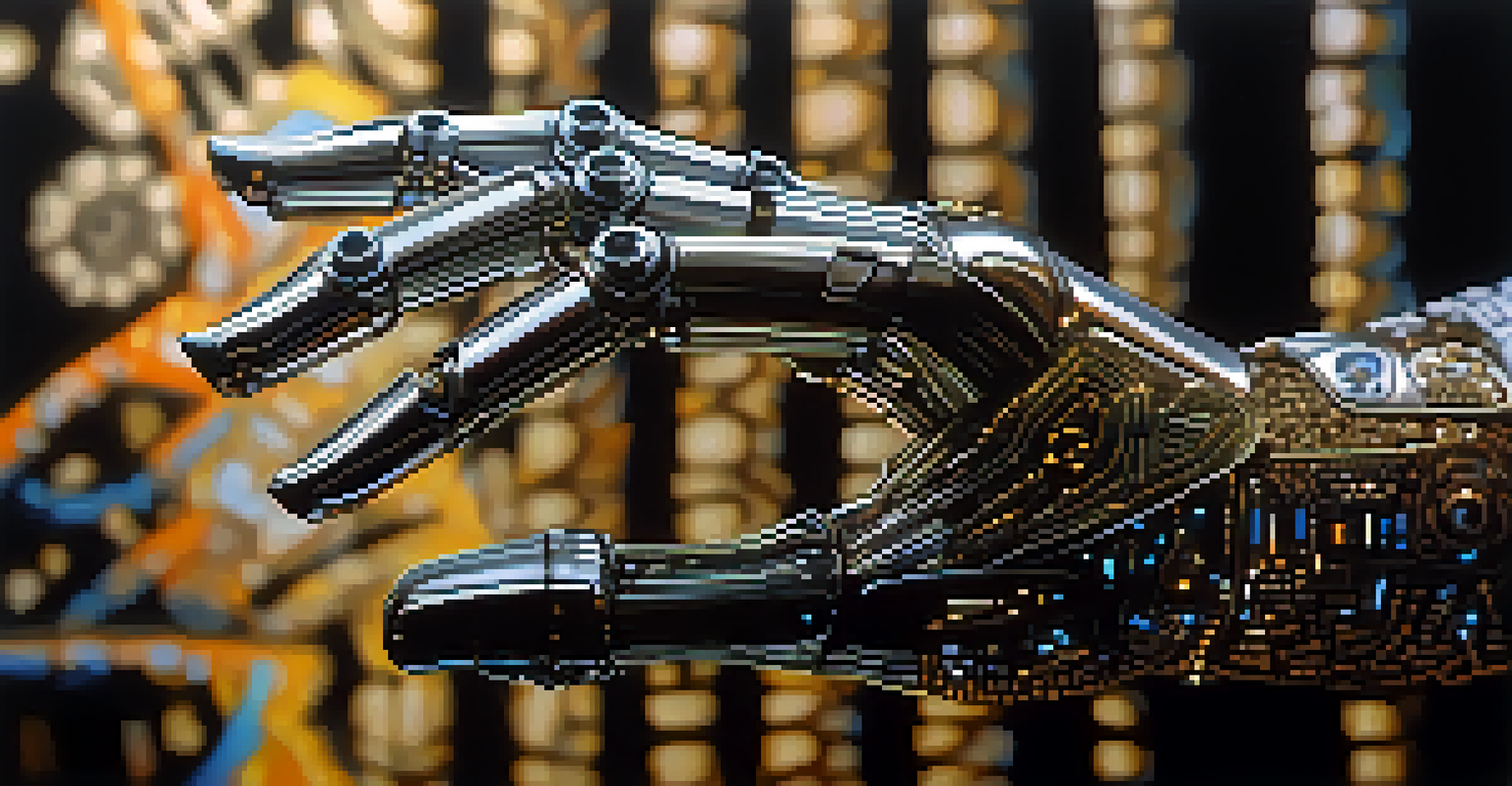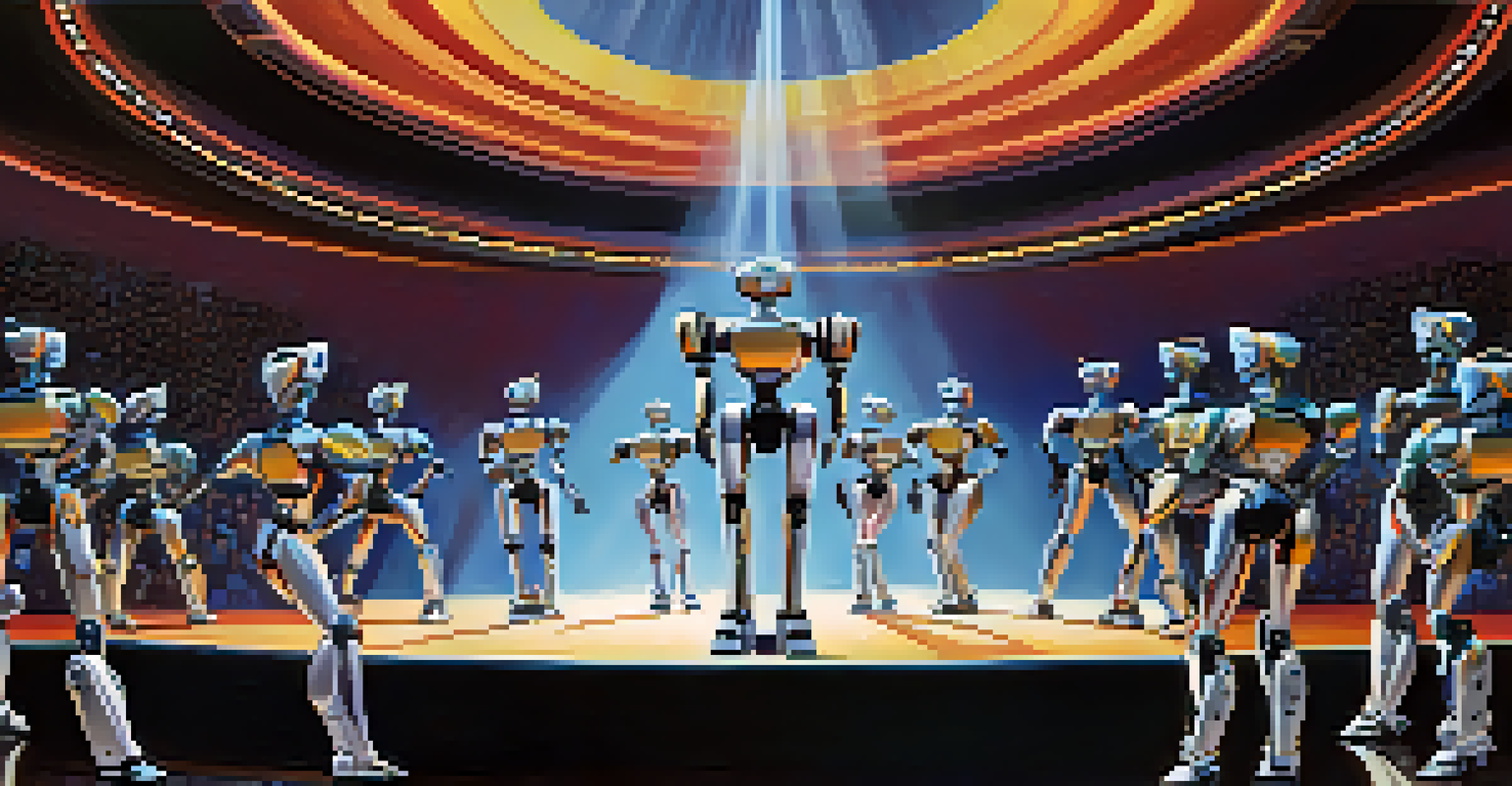Dance and Robotics: The Future of Movement and Performance

The Intersection of Dance and Robotics: A New Frontier
Dance and robotics may seem worlds apart, but they share a fascinating connection. Both fields involve movement, expression, and creativity, making their intersection a rich area for exploration. As technology advances, we’ve begun to see how robotic systems can enhance the art of dance, leading to innovative performances that captivate audiences.
Dance is the hidden language of the soul.
Imagine a dancer moving in perfect harmony with a mechanical partner, where each movement is synchronized flawlessly. This synergy not only enhances the visual appeal but also pushes the boundaries of what we define as dance. The collaboration between human artists and robots allows for a unique expression of emotions and storytelling, expanding the traditional narratives of dance.
As we delve into this new frontier, it becomes clear that robotics can serve as a tool for dancers, offering them new possibilities for creativity. From robotic costumes that respond to movements to programmable dance routines, the future of dance is not just about human performers anymore—it’s about a partnership that can redefine the art form.
How Robots Are Enhancing Dance Performances
Robotics technology is increasingly being integrated into dance performances, creating a captivating blend of art and science. For instance, robotic arms can be programmed to move in sync with dancers, adding a layer of complexity and excitement to the choreography. This element of unpredictability keeps audiences on the edge of their seats, wondering what will happen next.

Moreover, advancements in artificial intelligence have paved the way for robots to learn and adapt to human movements. Imagine a robot that can not only mirror a dancer's actions but also anticipate their next move, creating a seamless interaction. This dynamic relationship fosters a sense of connection that transcends the traditional performer-audience divide.
Dance Meets Robotics for Innovation
The intersection of dance and robotics is creating new artistic expressions and performances that captivate audiences.
As more dance companies experiment with these technologies, we can expect to see an evolution in dance styles and techniques. The integration of robotics encourages choreographers to think outside the box, leading to fresh and innovative performances that challenge our perceptions of movement.
The Role of AI in Choreography and Performance
Artificial Intelligence (AI) is revolutionizing choreography by providing new tools for dancers and choreographers. With AI, choreographers can analyze vast amounts of movement data, helping them discover patterns and develop unique routines. This technology not only saves time but also inspires creativity by suggesting new movement combinations that might not have been considered otherwise.
Robots will play a crucial role in the future of art and performance, enhancing human creativity rather than replacing it.
AI can also simulate various dance styles, allowing choreographers to explore different techniques and aesthetics without spending hours in rehearsal. For example, a choreographer can input a specific genre, and the AI can generate a series of movements that align with that style. This capability fosters a collaborative environment where human creativity and machine learning work hand in hand.
As AI continues to evolve, we can anticipate even more sophisticated tools that will further enhance the choreographic process. The future of dance could see choreographers leveraging AI to create entirely new genres, making each performance a unique blend of human intuition and robotic precision.
Robotic Dance Competitions: A New Form of Art
As technology advances, robotic dance competitions have emerged as an exciting new form of entertainment. These events showcase the capabilities of dance robots, often designed and programmed by teams of engineers and artists. The performances are not only a testament to technical skill but also creativity, as teams strive to create captivating narratives through movement.
Competitions like the 'Robot Dance Battle' highlight how far technology has come in mimicking human movement. Each robot dances with precision and rhythm, often surprising audiences with their ability to express emotions through programmed choreography. These events challenge our understanding of art and performance, asking us to reconsider the boundaries of creativity.
AI Enhances Choreography Techniques
Artificial Intelligence is revolutionizing choreography by providing tools that analyze movement data and suggest creative routines.
The growth of robotic dance competitions indicates a shift in how we perceive dance itself. It raises questions about authorship and originality in art, prompting discussions about the role of technology in creative expression and how machines can contribute to the evolving narrative of dance.
The Emotional Connection Between Humans and Robots
One of the most intriguing aspects of dance and robotics is the emotional connection that can develop between humans and their robotic counterparts. As audiences watch dancers interact with robots, they often find themselves emotionally invested in the performance. This connection challenges the perception of robots as mere machines, highlighting their potential to evoke genuine feelings.
Dancers often describe their robotic partners as collaborators, enhancing the storytelling aspect of their performances. This relationship can lead to moments of tension, joy, and even sadness, creating a shared experience that resonates with viewers. The ability of robots to mimic human emotions, albeit through programming, adds depth to the performance.
Ultimately, the emotional connection established between humans and robots raises questions about empathy and our understanding of what it means to connect through art. As we continue to explore this relationship, we may find that the lines separating human and machine become increasingly blurred in the realm of dance.
Challenges and Ethical Considerations in Robotic Dance
While the fusion of dance and robotics presents exciting opportunities, it also brings forth challenges and ethical considerations. One major concern is the potential for robots to replace human dancers, leading to job loss in the industry. As robotic technology advances, it’s essential to consider how it can complement rather than compete with human talent.
Another challenge lies in the programming of robots, particularly when it comes to expressing complex human emotions. Can a robot truly capture the nuances of a dancer's performance? This question prompts a deeper exploration of what it means to be an artist and whether machines can genuinely replicate human creativity.
Emotional Bonds with Robotic Partners
Dancers are forming emotional connections with robots, enhancing storytelling and challenging perceptions of art.
As we navigate these challenges, it’s crucial to foster a dialogue about the future of dance in the age of robotics. By addressing these ethical considerations head-on, we can ensure that the integration of technology enhances the art form without undermining the invaluable contributions of human artists.
The Future of Dance: A Harmonious Blend of Art and Technology
Looking ahead, the future of dance promises to be a harmonious blend of art and technology. As robotics and AI continue to evolve, we can expect to see even more innovative performances that challenge our perceptions of movement and expression. This fusion opens doors to new creative possibilities, allowing artists to explore uncharted territories.
Moreover, as audiences become more accustomed to witnessing robotic performances, the acceptance of technology in dance will likely grow. This shift could pave the way for more collaborations between dancers and technologists, fostering an environment where creativity knows no bounds. Imagine a world where every performance is a unique collaboration between human artistry and robotic precision.

In this brave new world, dance can serve as a powerful medium for exploring the relationship between humanity and technology. The future of movement and performance may very well rest on the shoulders of those willing to embrace this collaboration, ultimately enriching the art form for generations to come.